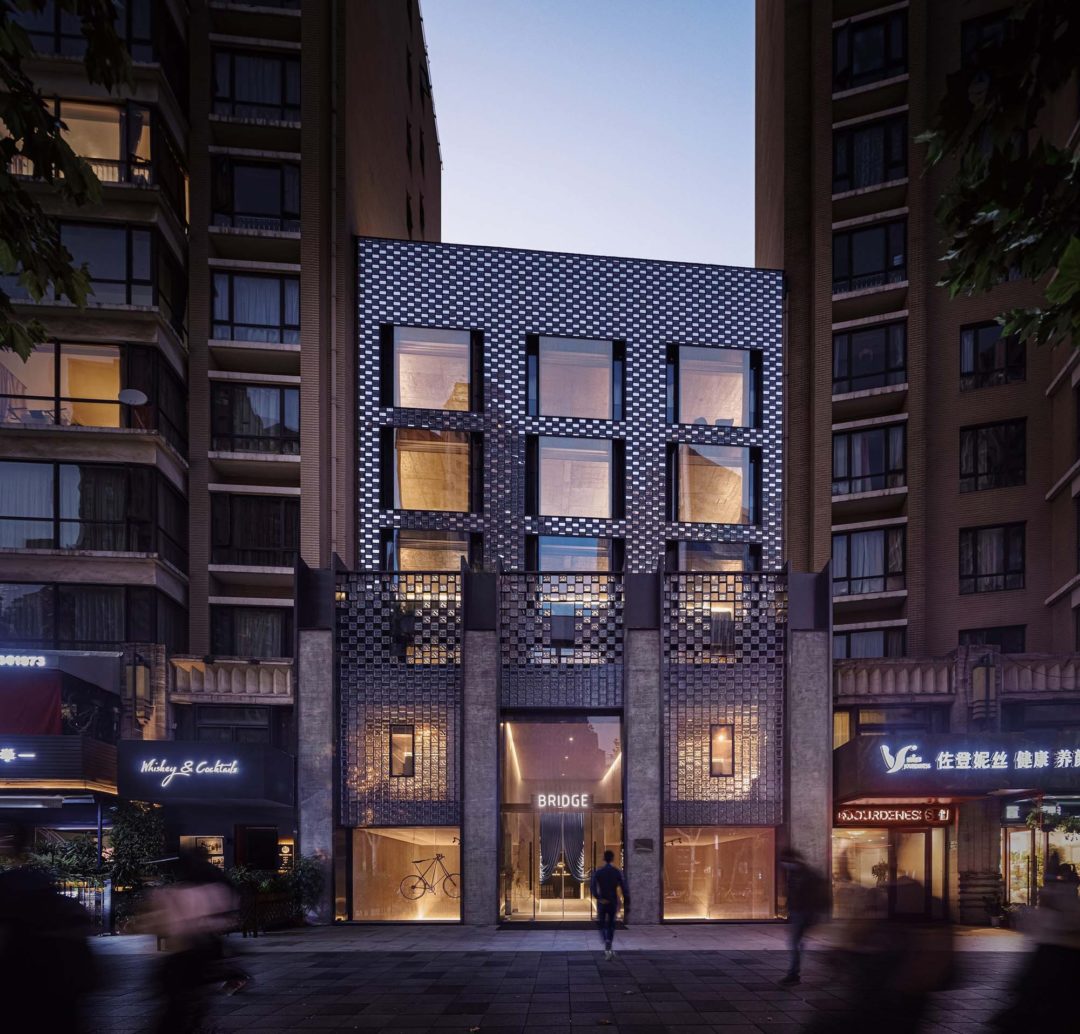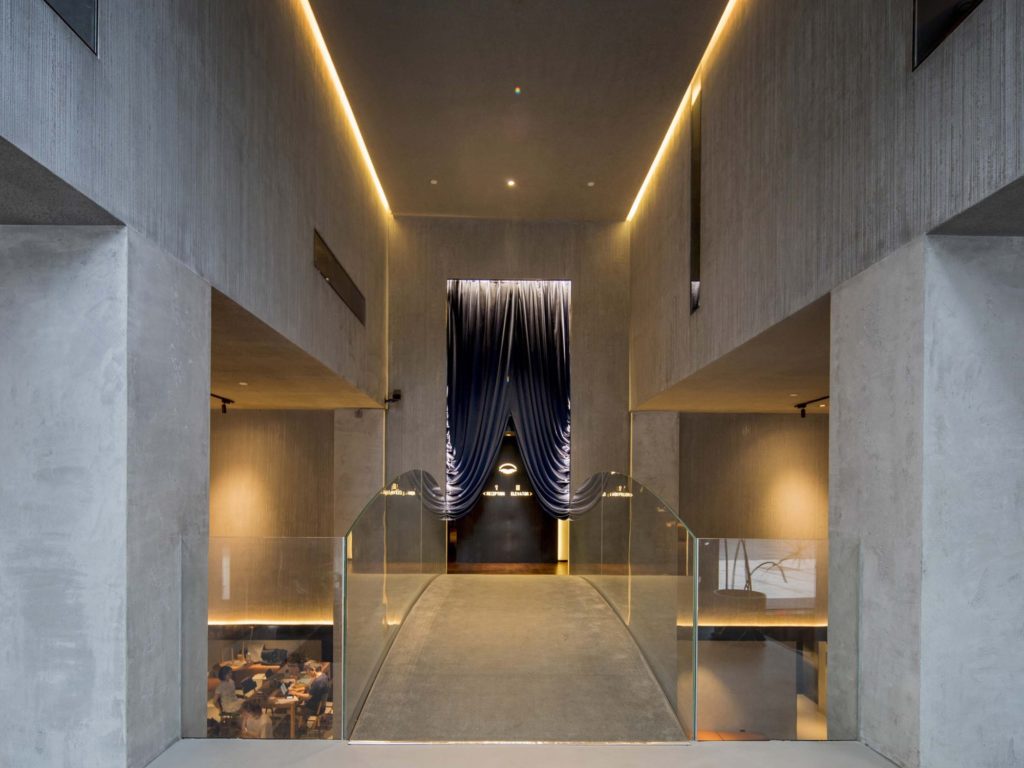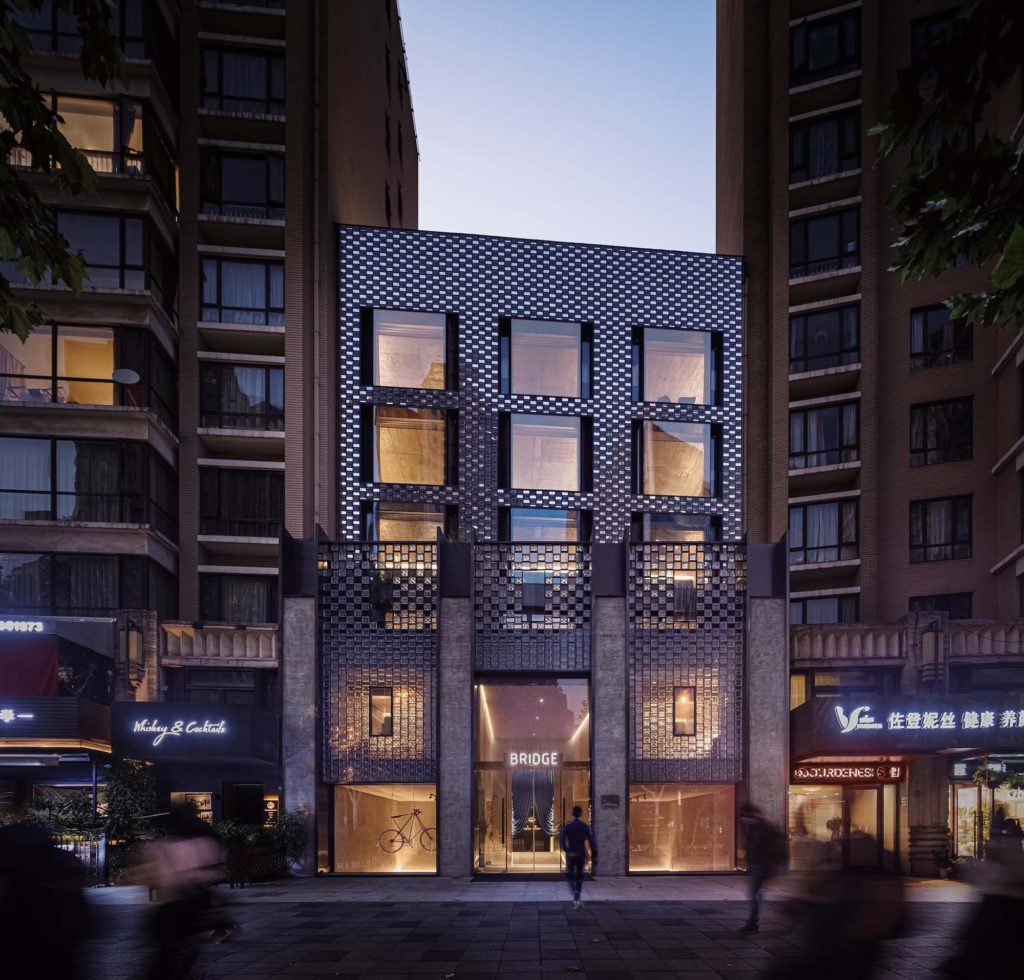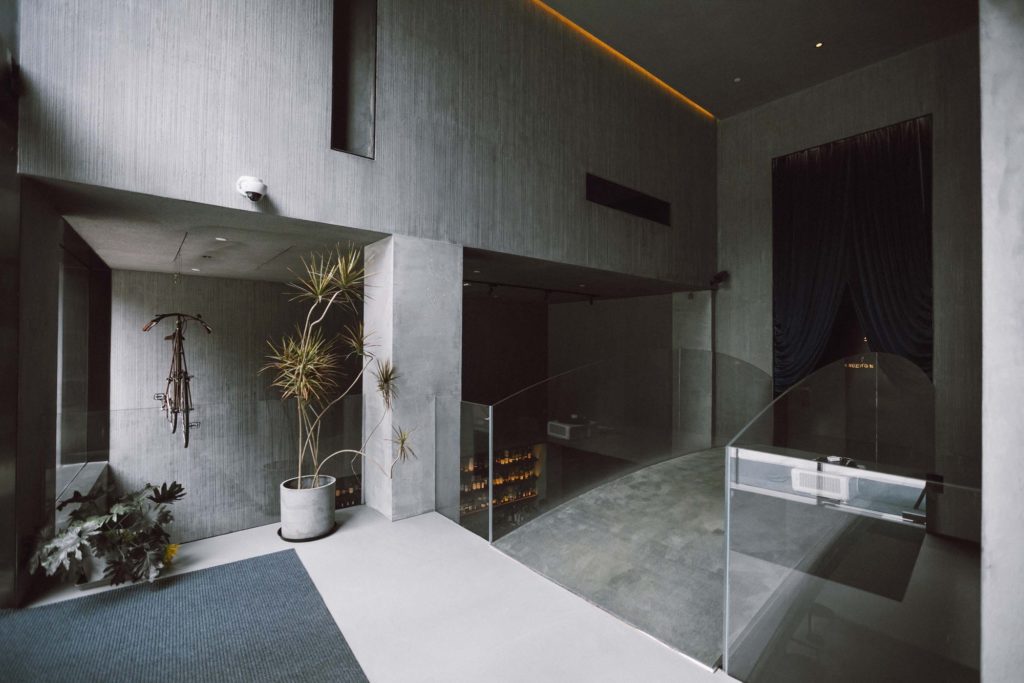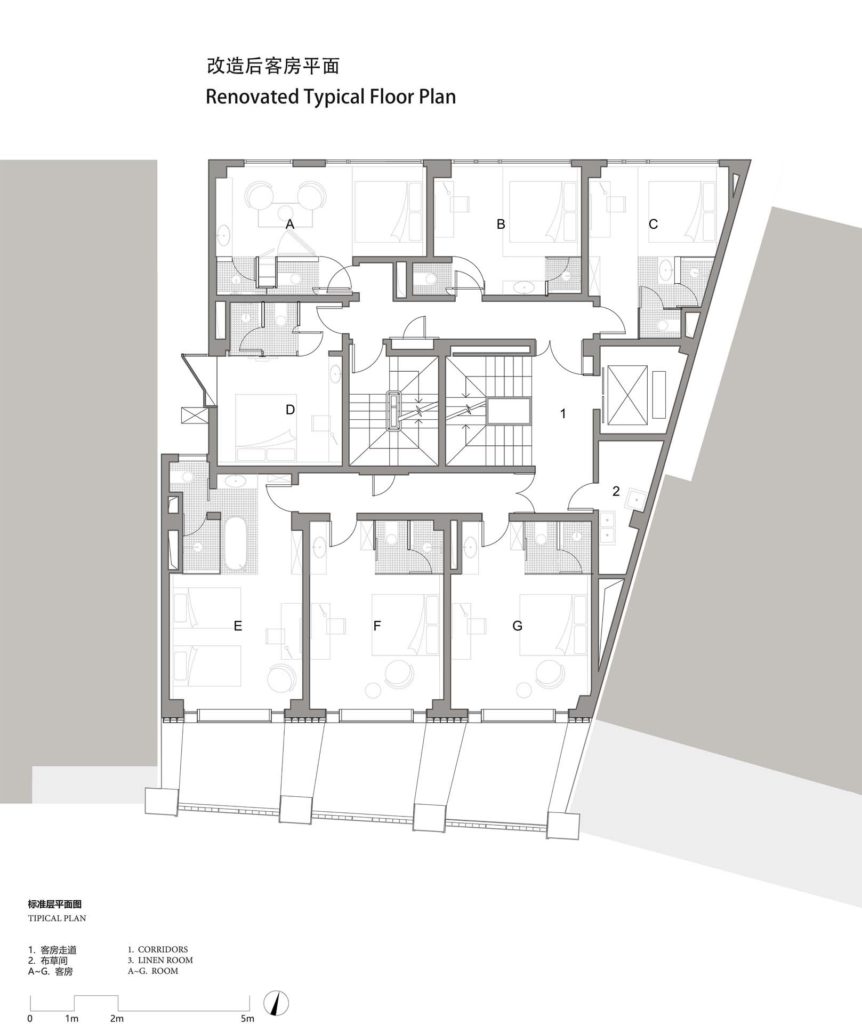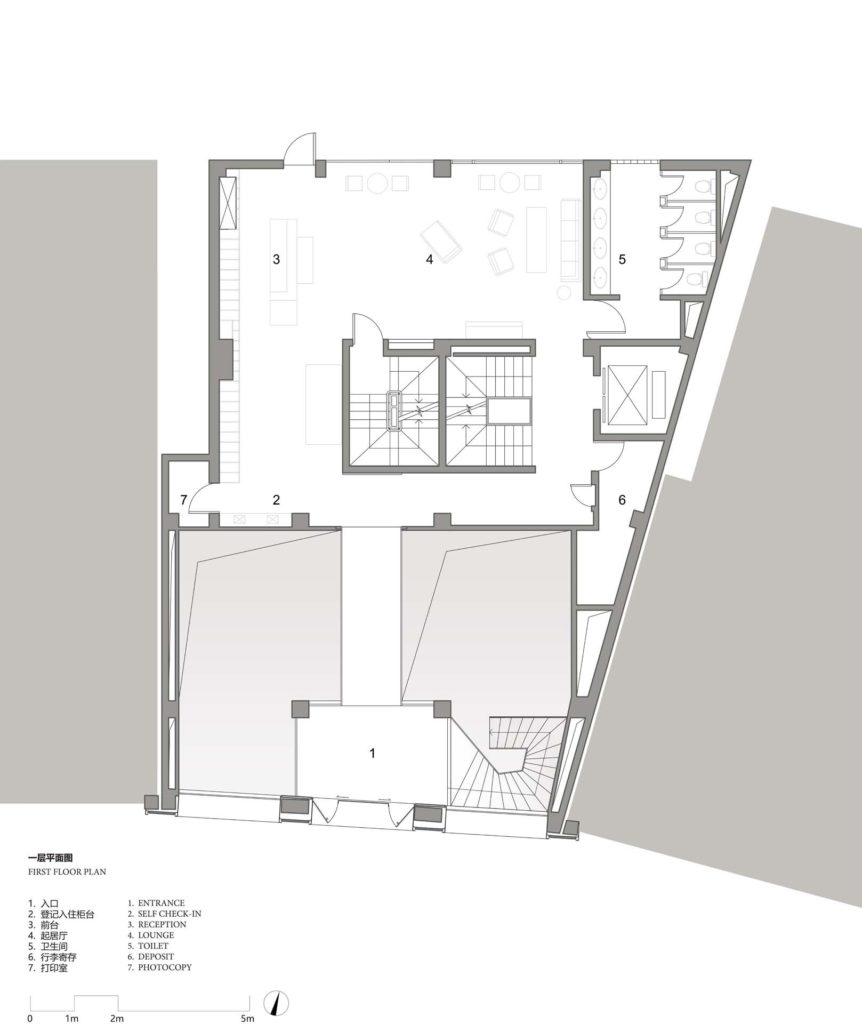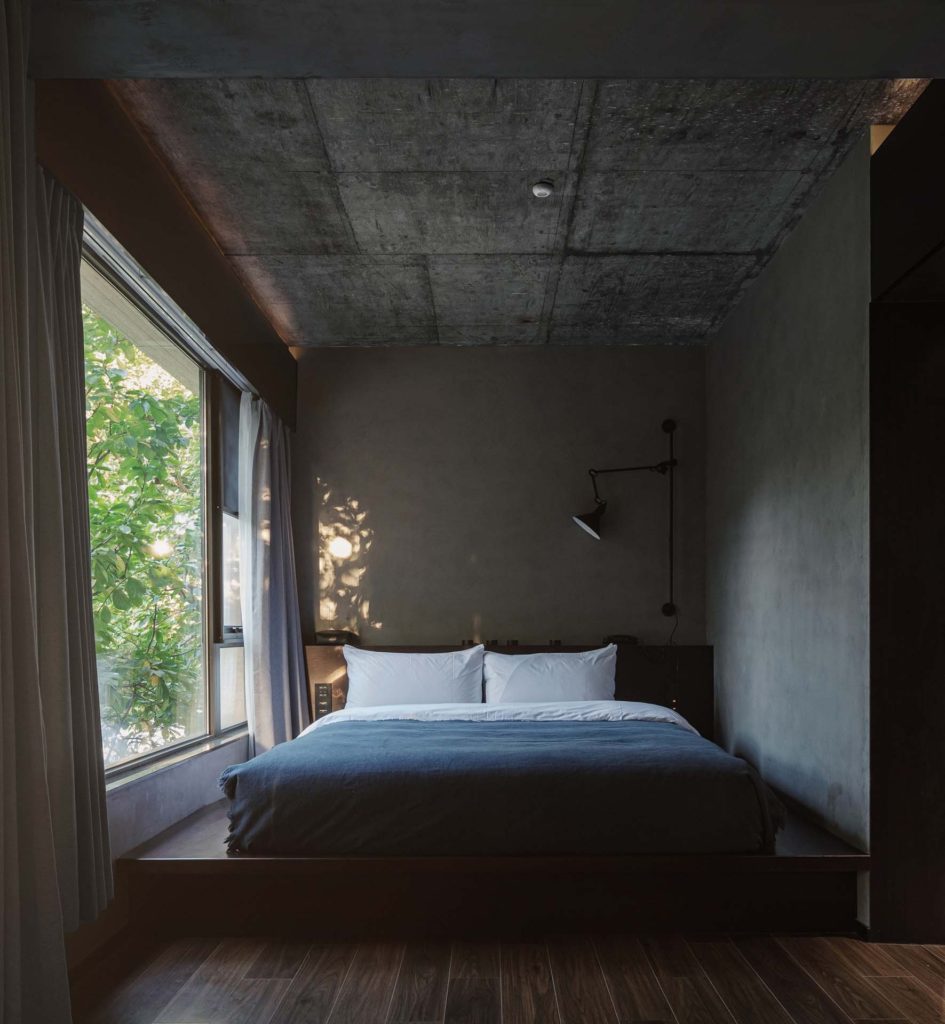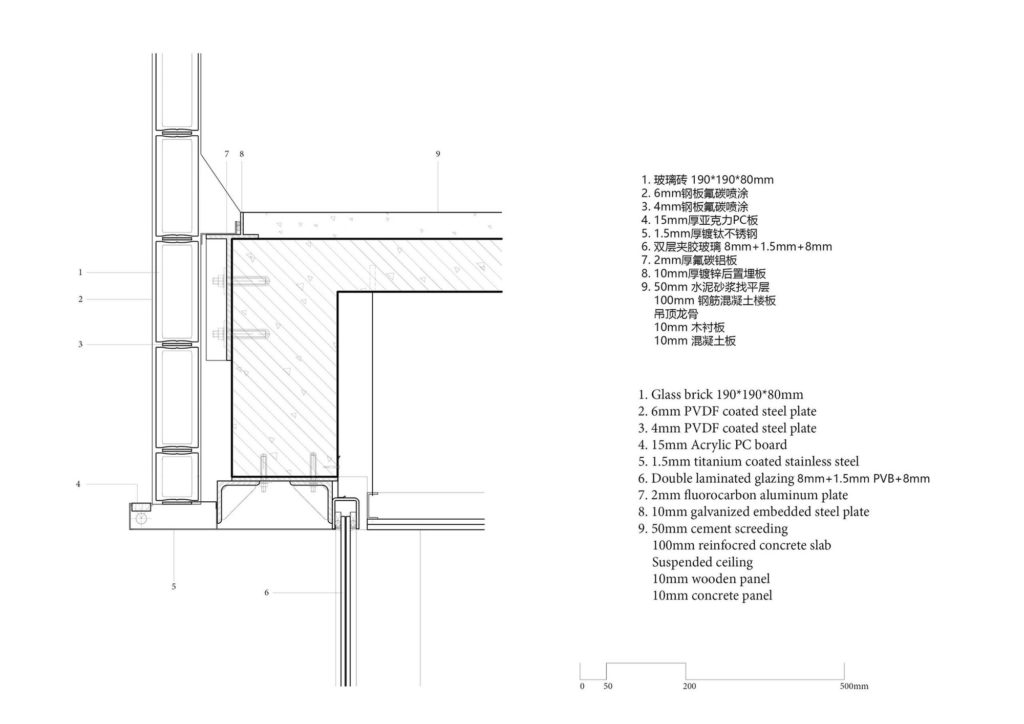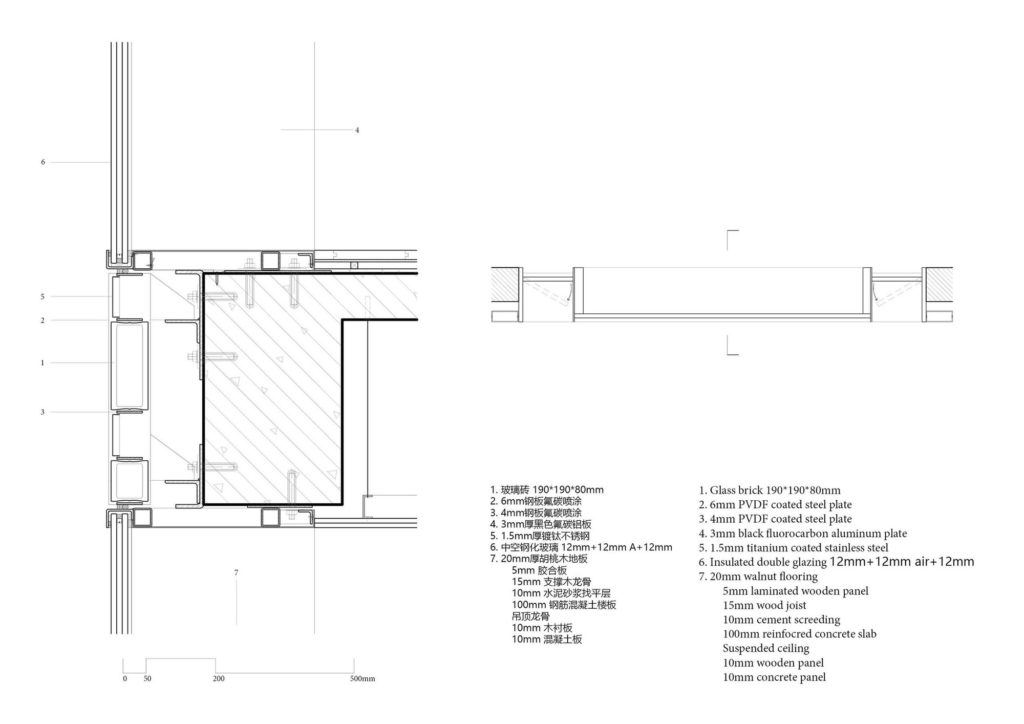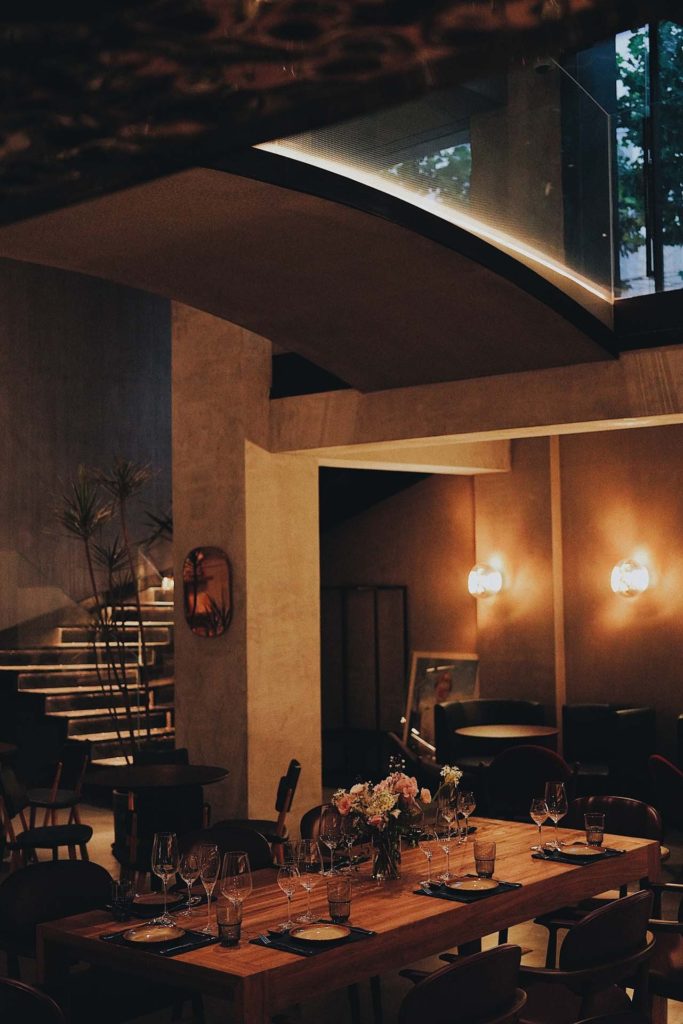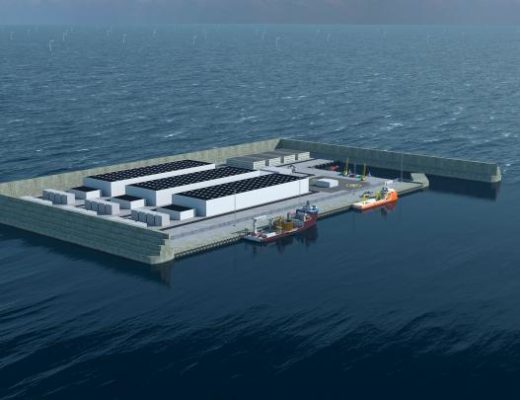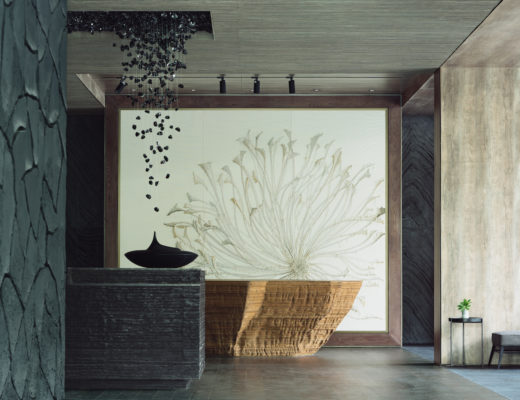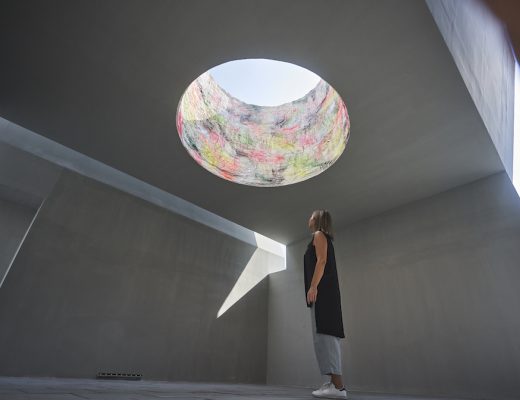Xing Design’s latest project is NEOBRIDGE that aims to be an experiment on the relationship between the hotel and the city. The “bridge” is the theme and the solution.
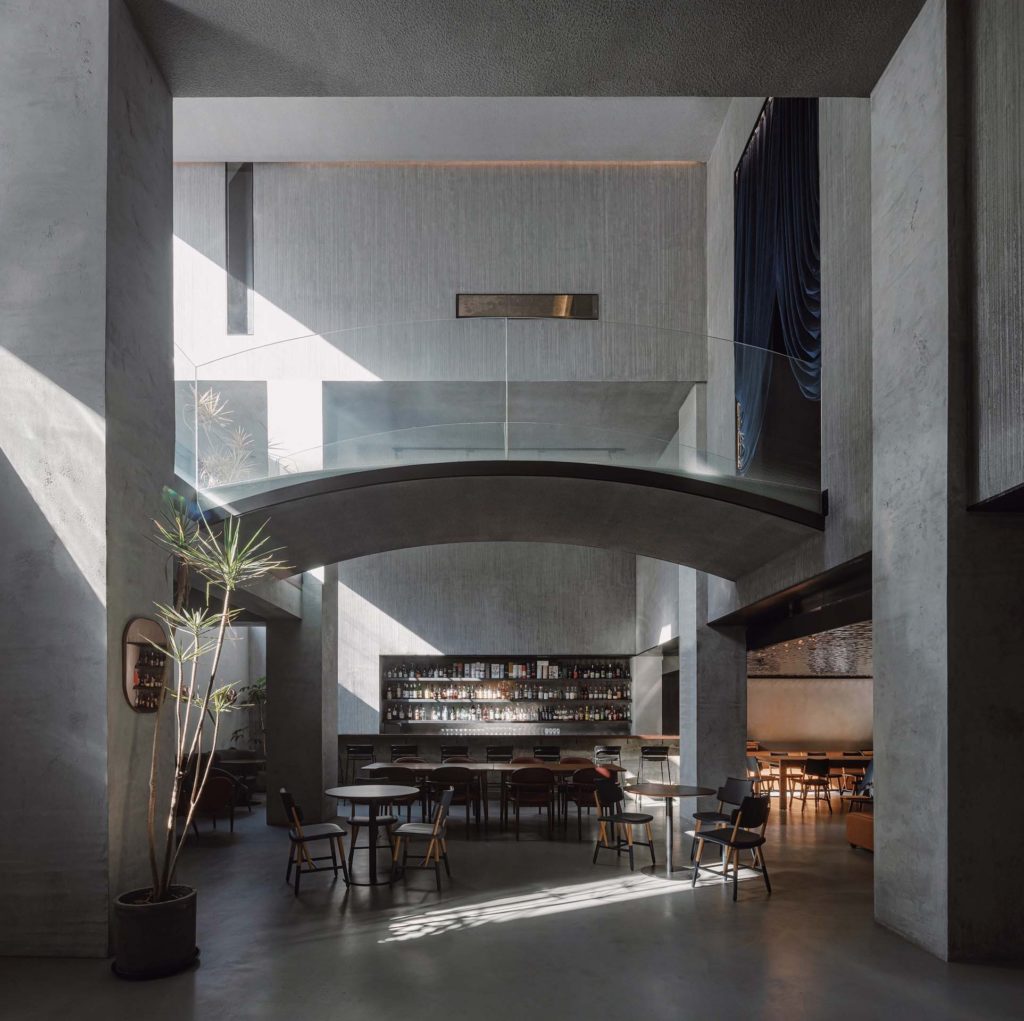
Located at Caojiadu, Shanghai, with St. Michael’s Cathedral in the front and a residential garden facing Suzhou Creek at the back, the firm’s goal was to create a comfortable but dramatic space in between two high rises while keeping the building’s original massing and form unchanged.
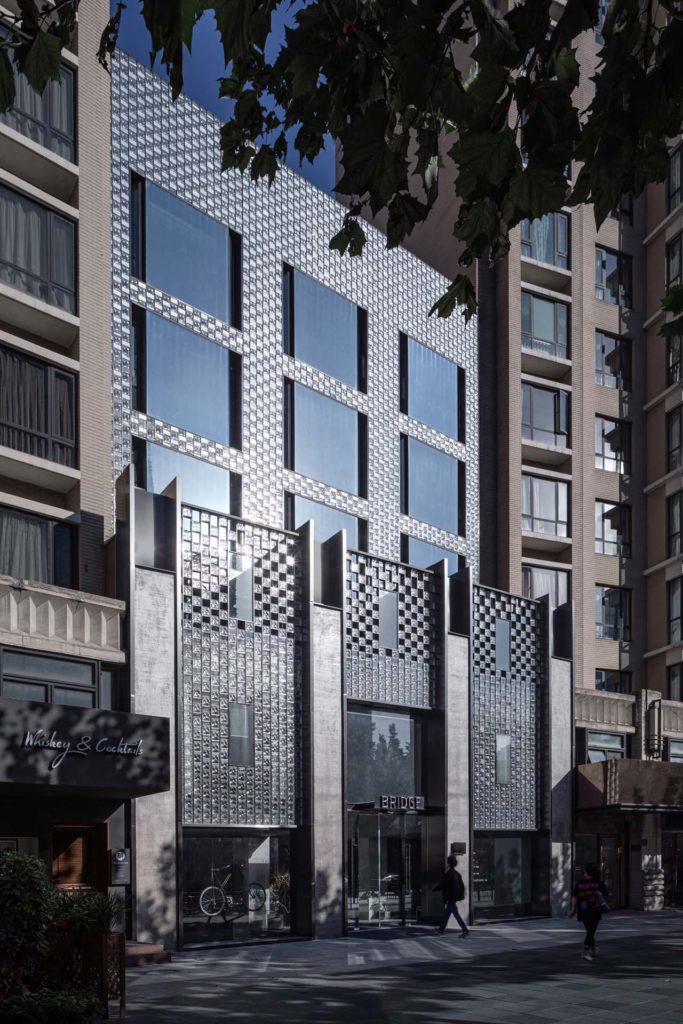
The challenges the team faced with the original structure was its low floor height and repressive basement. The design practice opened up the entire first floor to form a continuous vertical space with a bridge within the bridge theme. Underneath the bridge is an inner extension of the city; while across from the bridge is the hotel, at a distance from the buzz.
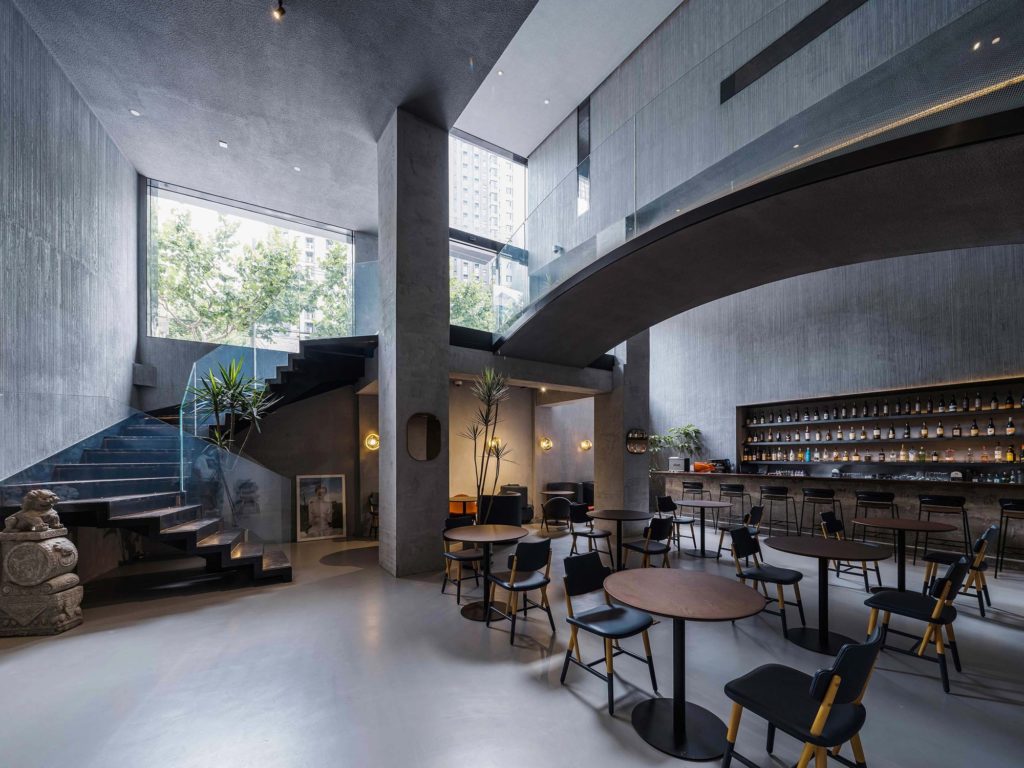
Spaces and materials are expressed based upon the story of the “bridge.” It is intended to create a waterfall facade impression in the concrete urban context. The curtain wall is by glass bricks, which balance the privacy and lightness.
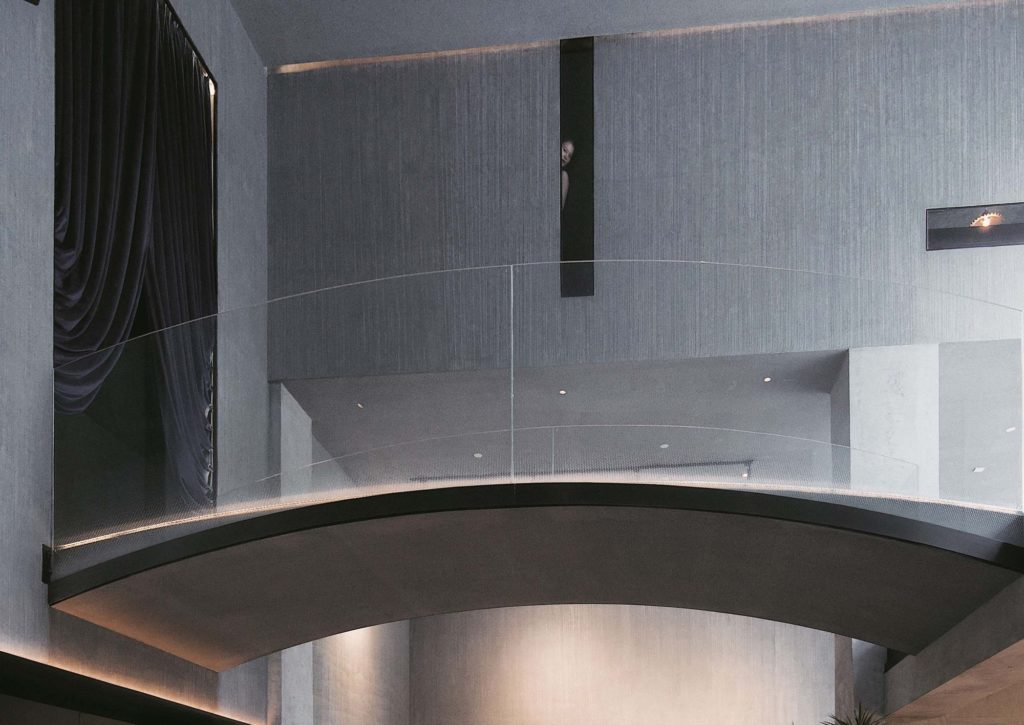
The “waterfall” narrative is carried through both exterior and interior design, in which various materials and finishes expressed different conditions of movement: falling water, underwater, and at the bank. The water current is also implied within each room: the walls of bathrooms are made of handmade azure glazed tiles and watermark glass, reflecting the soft movement of the river onto the walls.

Spatial configuration of rooms was also a challenge due to existing pipes and wires. In order to achieve maximum floor height, the original concrete is exposed. The bathrooms and air-conditioning pipelines are inserted as integral boxes. Most importantly, no louver can be found within the entire building as they are all concealed within the gaps between materials.
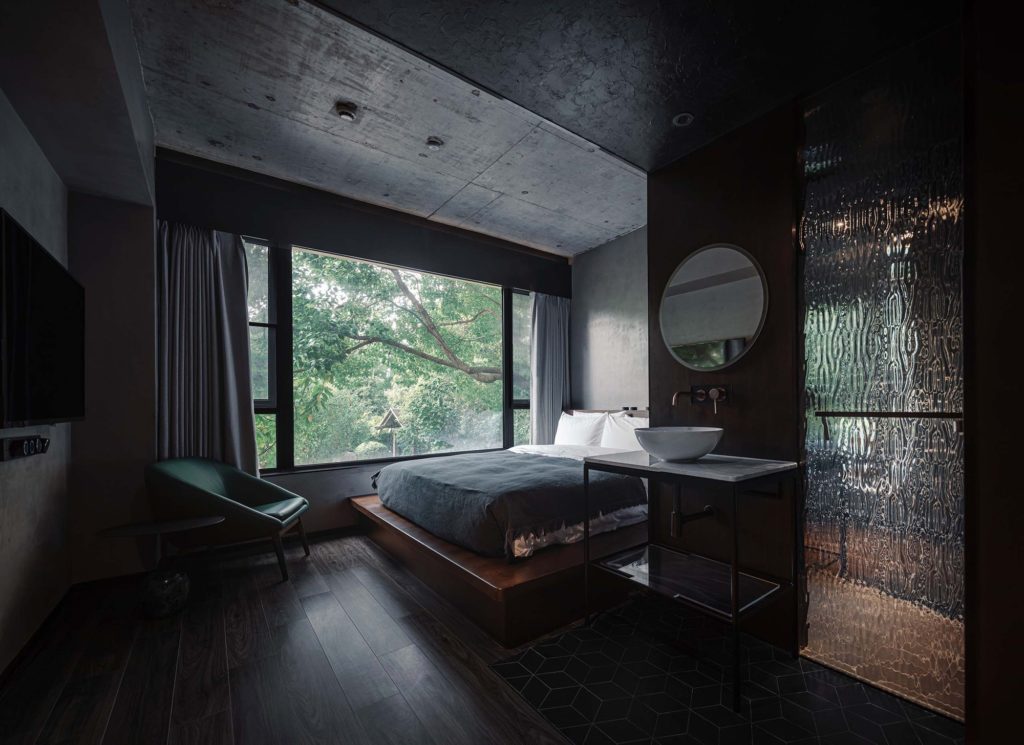
The mullion walls on the southern façade contain two operable windows which are specifically designed to maintain a complete water-falling appearance when opened. Other details in the rooms include openings on the balcony wall and two overlooking rooms above the bridge, as well as a triangular mirrored window expanding one’s visual experience of a tiny space.
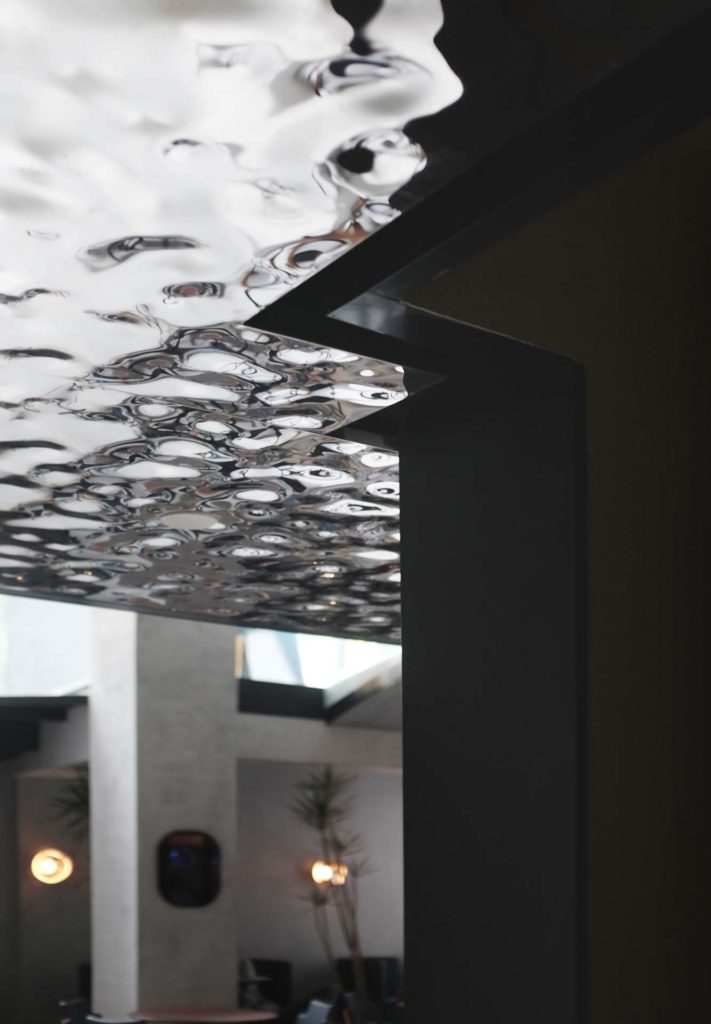
There are a few surprising set-ups in the hotel: a mirror periscope window in the darkest room reflecting the exterior landscape; little openings in the courtyards where guests can handshake with neighbors; strip windows people can peek at the bar and bridge.
Project details:
- Architects: XING DESIGN
- Area: 2,100m²
- Year of completion: 2020
- Photographs: Shengliang Su
- Manufacturers: MATZ FORM
- Lead architect: Xing Xiong
- Design team: Xing Xiong, Qichen Cao, Mo Chen, Sheng Lei, Qingyu Cai, Lei Zhang, Ziai Huang, Wenxuan Huang, Yilan Tao, Yuan Tao, Xuezi Li, Lu Yue (Visual), Yuchu Wang (Model)
- Engineering: Huayu Hua
- Heavy current engineering: Yan Luo
- Water supply and drainage design:Xueliang Li
- Decoration: Sang Ge, Zile Ye
- Client: Hotel Duxiana Shanghai
See the full image gallery here:
You might also like:
Gad architects designs modern hotel with traditional courtyard concept in Hebei, China

